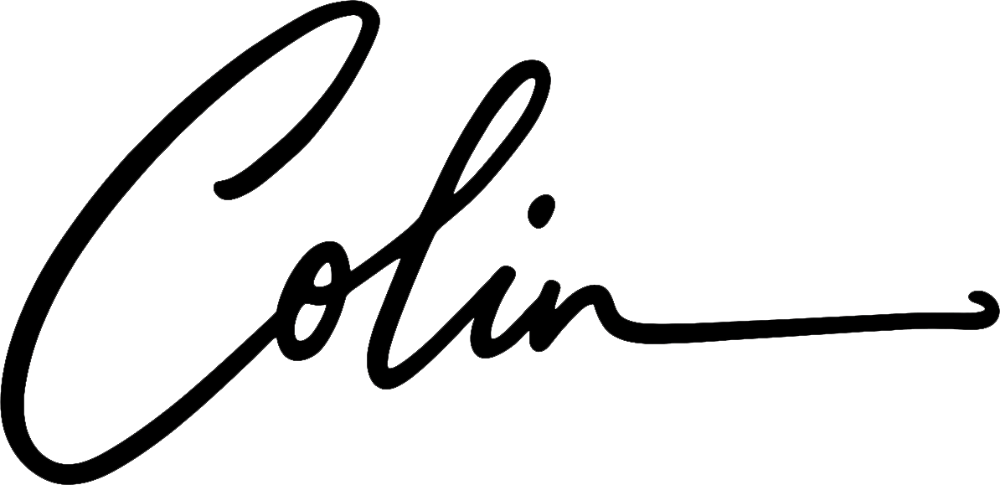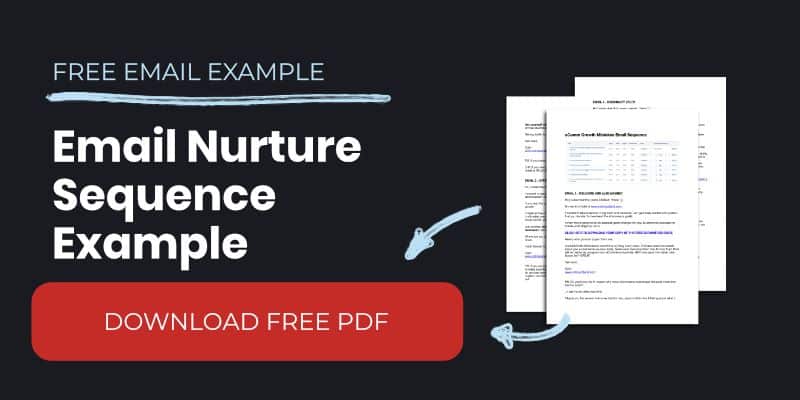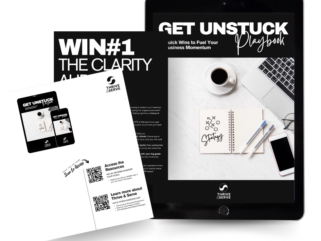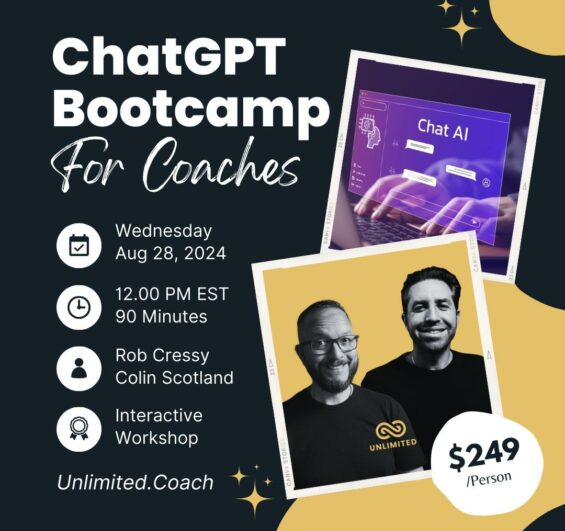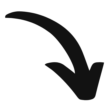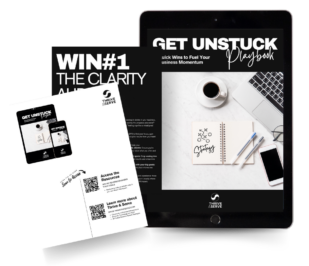What is an email nurture sequence and how do I set one up?
Following on from my previous post about creating a Lead Generation Funnel, I am going to give you step-by-step guidance on an important part of the funnel, the email nurture sequence.

By the end of this article, you will know how to write your first email nurture sequence.
What to say in each of the emails in the email sequence and when to say it.
We will explore a simple framework you can use when writing your email sequence.
Nurturing a lead into a customer with email, what's that all about?
A lead nurture sequence is a super important part of your marketing. The sales funnel, lead nurturing and email list building are crucial assets that drive the engine of growth and success for your businesses.
It is the first contact you have with someone after they have requested your lead magnet. It is an automated series of emails, an email sequence that is sent out using an autoresponder or email service provider (ESP).
They want you to solve their pain. You need to deliver. This is where the email sequence comes into play in your sales funnel.
Using a workflow or automation in your email marketing platform you craft a series of emails (an email sequence) to deliver the lead magnet and follow up with valuable content over a period of time. Building your email list and building your business as a result.
Establishing and enriching your relationship with the contact, and pointing their attention to your products and services.
In the early phase of this brand-new relationship, content and timing are critical.
Your email marketing software collects the email address via a form or opt-in on your website, blog post, or landing page. Next, you need to create a welcome sequence of emails that fires on autopilot.
The workflow and email sequence will nurture leads while you sleep. While you walk the dog or watch your children's school play leads and opportunities will be coming into your business.
Imagine that?
Because there is little manual input, it makes the process scalable. It can handle 10,000 in the same way as it can handle 10.
Contacts are 'tagged' in your Email Marketing platform when they request your lead magnet. These tags trigger automated workflows that progress the contact through the sequence.
The whole process is driven by customer behavior.
Below is a sample lead funnel automated workflow.
Contacts enter into the workflow when they request a lead magnet.
The lead magnet is delivered inside a 'campaign', a sequence of emails that deliver value and encourage conversion from a lead into a customer.
In this example, there is a decision fork that checks first to see if the download request was made by an existing customer. Customers are sent a separate, one-off email with the download. We don't want to pitch our services to existing customers in the same way after all.
This leaves only fresh contacts in the workflow to go through the initial relationship-building sequence.
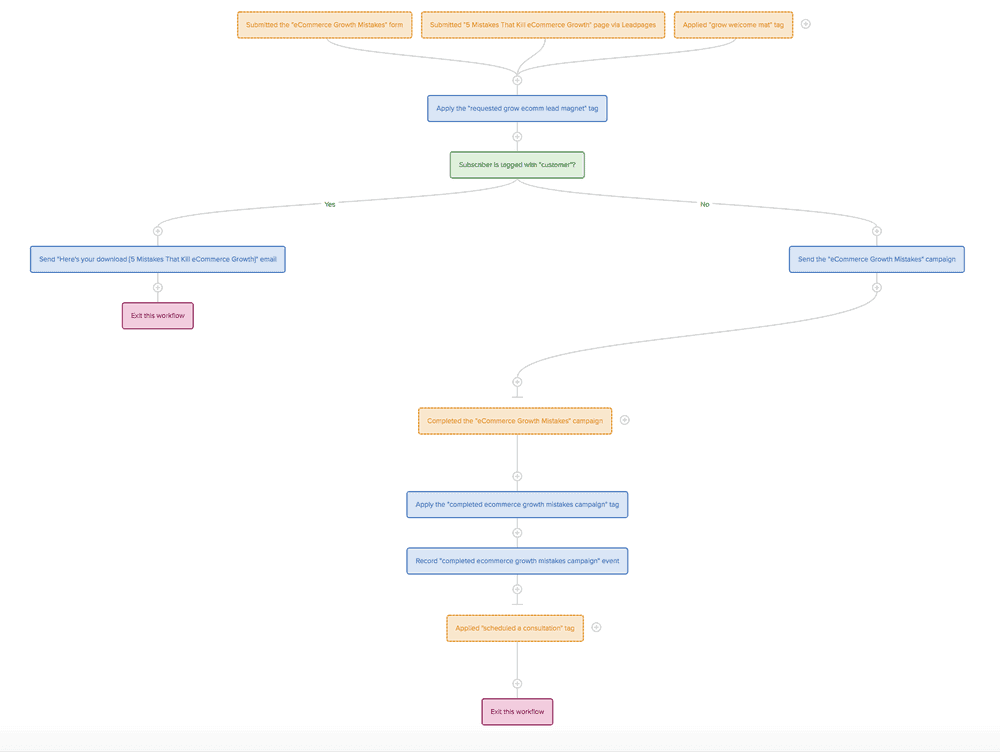
Example Lead Generation Funnel Automation Workflow
It is this campaign sequence part of the above automation that we are looking at today. The psychological framework you will use to craft a series of emails is an email sequence to your contacts.
There are many ways to create an email nurture sequence. And it is important that you take into account the buyer journey when deciding to buy your services/products.
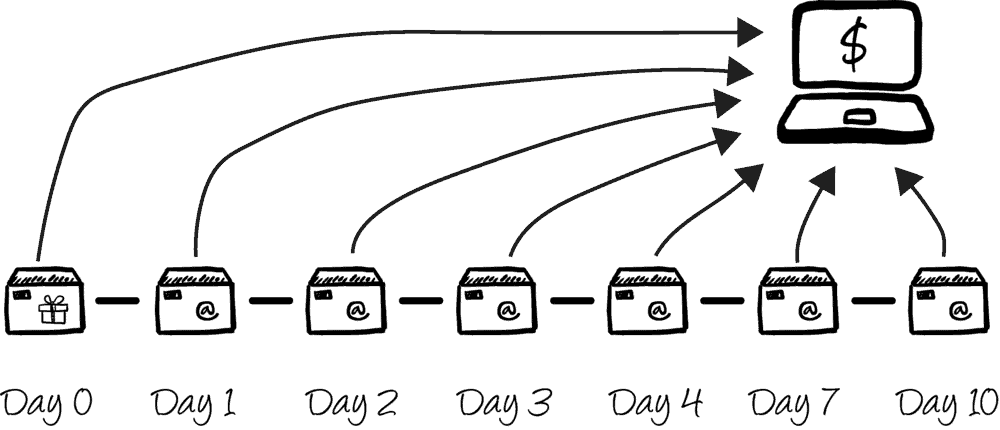
All emails point toward your sales page or whatever your goal is.
Here is a simple framework you can use right away when creating your first email nurture sequence. It all starts when you create an email, and another, and another. Before you know it you have a whole email nurture sequence. Feel free to adapt the timings and content to suit your industry.
- Welcome & Lead Magnet Delivery - Immediately - Thank the contact and deliver the lead magnet.
- Address Major Objection - Day 1 - In the form: “Most people think X, but if they only knew Y, then Z”.
- Provide Case Study/Social Proof - Day 2 - Show them what life will be like after they have become a customer.
- Offer Help - Day 3 - Overcome obstacles. Ask them to reply with the biggest obstacle they are facing. “Stuck? Need some help?” Use feedback to determine the accuracy of email 2.
- Strong Call To Action - Day 4 - Final call email with a strong call to action focus, “Book a consultation today”.
- Re-Engagement Email 1 - Day 5 - Frankly, I don’t understand? Encourage interaction by stimulating a response.
- Re-Engagement Email 2 - Day 10 - Are you still interested?
Here is a sample showing the emails from the automation example above. They are built around the same psychological framework. Notice the short, catchy subject line in each email? This is because, like the headline is the most important part of a sales page, the subject line is the critical part of your email. Make it count.
Sample Email Nurture Sequence

Your goal is to create an engaging, value-driven follow-up email sequence.
You are trying to build relationships with your potential customers and encourage conversions into sales.
Write your email sequence using the framework above. Get it out into the world; then the fun can begin.
Once you have your sequence in place and people are going through your sequence, you can start to measure it.
How many people are opening your emails?
How many are clicking through to your content?
How many conversions into customers are you getting?
Armed with this information you can make data-driven changes to your sequence. Change headlines, timings, and content.
Do more of what works, and less of what doesn't.
I won't lie, this is where the magic happens. Rarely have I put an email nurture sequence into place and it converts straight off the bat. The best converting sequences come from a large amount of trial and error.
“Track measure and make better.”
If you follow these steps, you will have an email nurture sequence that converts leads into sales for your business.
Creating Your Email Nurture Sequence
Get precious over your time. Allot set amounts of time into each day to 'creation'.
All too often as busy entrepreneurs, we focus our efforts on what we see as the most important. We give importance-weightings to our minds.
I need to get this done. I HAVE to put this fire out. I MUST deal with this.
You arrive to work with good intentions, only to meet with a tidal wave of issues and problems that sap your day.
Another day has gone by, and you have spent it working in your business, rather than on your business.
So what should you do?
If you are happy fighting fires and being reactive, nothing.
If you have bigger plans and want to get more leads and sales, then you need to get precious over your time. Guard it with your life.
One simple method that works for me is ring-fencing blocks of time in my day to work on 'creation'.
Your 'creation' time could be as little as 25 minutes each day. Try using a Pomodoro timer to keep track of time. If you can give yourself 25 minutes each weekday to work on stuff that will move the needle guess what?
In 5 days you will have spent over 2 hours on dedicated creation tasks that will move the needle in your business.
How do you eat an elephant? Bite-size pieces. One mouthful at a time.
Give yourself 25 minutes each day to work through each of the steps. By the end of the process, you will be clear about your why and who you serve.
You will have created blog posts, pillar content around your niche, and what you do that you can share on social media. You will address the major pain points of your customers with lead magnets. You will have mechanisms in place to capture their email address. And be ready to nurture these new-found prospects into leads and sales with an automated email sequence.
Craft an email nurture sequence using the framework provided.
Want to see something a little more complex? Download my checklist lead magnet to see how my email nurture sequence plays out over the coming days.
If you're a Drip user, check out the Getting Started With Drip Guide I created.
See and experience the framework I use to establish rapport and relationships with contacts in that critical early stage.
Feel free to swipe my content and adapt it to your business.
If you have multiple products in your value ladder try this approach to asking for the sale in your welcome sequence.
Track, measure, and make improvements in your email sequence. And watch your conversion rates increase as you establish a steady flow of leads and sales.
